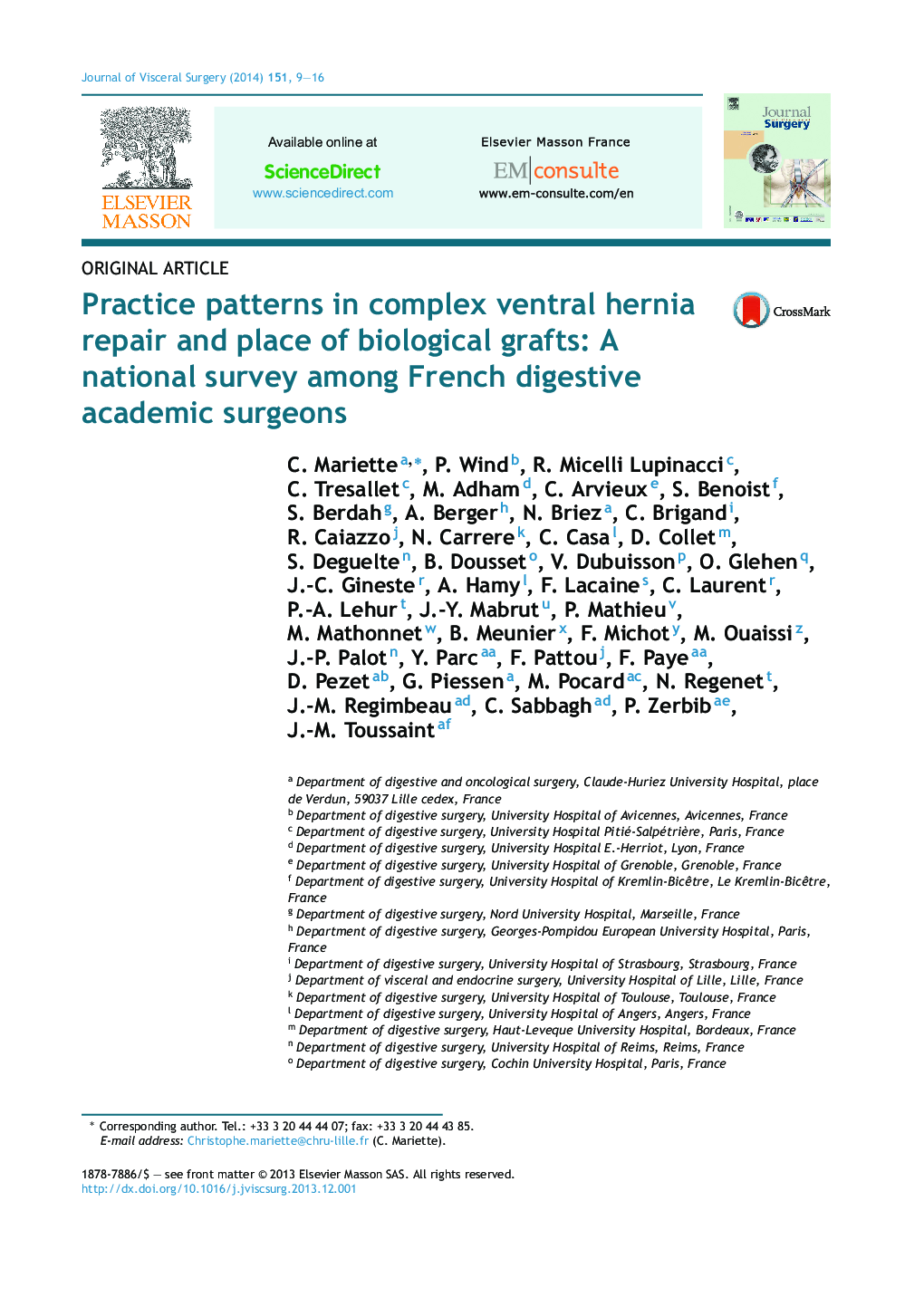| کد مقاله | کد نشریه | سال انتشار | مقاله انگلیسی | نسخه تمام متن |
|---|---|---|---|---|
| 3316011 | 1211513 | 2014 | 8 صفحه PDF | دانلود رایگان |
SummaryBackgroundDespite the prevalence of complex ventral hernias, there is little agreement on the most appropriate technique or prosthetic to repair these defects, especially in contaminated fields. Our objective was to determine French surgical practice patterns among academic surgeons in complex ventral hernia repair (CVHR) with regard to indications, most appropriate techniques, choice of prosthesis, and experience with complications.MethodsA survey consisting of 21 questions and 6 case-scenarios was e-mailed to French practicing academic surgeons performing CVHR, representing all French University Hospitals.ResultsForty over 54 surgeons (74%) responded to the survey, representing 29 French University Hospitals. Regarding the techniques used for CVHR, primary closure without reinforcement was provided in 31.6% of cases, primary closure using the component separation technique without mesh use in 43.7% of cases, mesh positioned as a bridge in 16.5% of cases, size reduction of the defect by using aponeurotomy incisions without mesh use in 8.2% of cases. Among the 40 respondents, 36 had experience with biologic mesh. There was a strong consensus among surveyed surgeons for not using synthetic mesh in contaminated or dirty fields (100%), but for using it in clean settings (100%). There was also a strong consensus between respondents for using biologic mesh in contaminated (82.5%) or infected (77.5%) fields and for not using it in clean setting (95%). In clean-contaminated surgery, there was no consensus for defining the optimal therapeutic strategy in CVHR. Infection was the most common complication reported after biologic mesh used (58%). The most commonly reported influences for the use of biologic grafts included literature, conferences and discussion with colleagues (85.0%), personal experience (45.0%) and cost (40.0%).ConclusionsDespite a lack of level I evidence, biologic meshes are being used by 90% of surveyed surgeons for CVHR. Importantly, there was a strong consensus for using them in contaminated or infected fields and for not using them in clean setting. To better guide surgeons, prospective, randomized trials should be undertaken to evaluate the short- and long-term outcomes associated with these materials in various surgical wound classifications.
Journal: Journal of Visceral Surgery - Volume 151, Issue 1, February 2014, Pages 9–16
